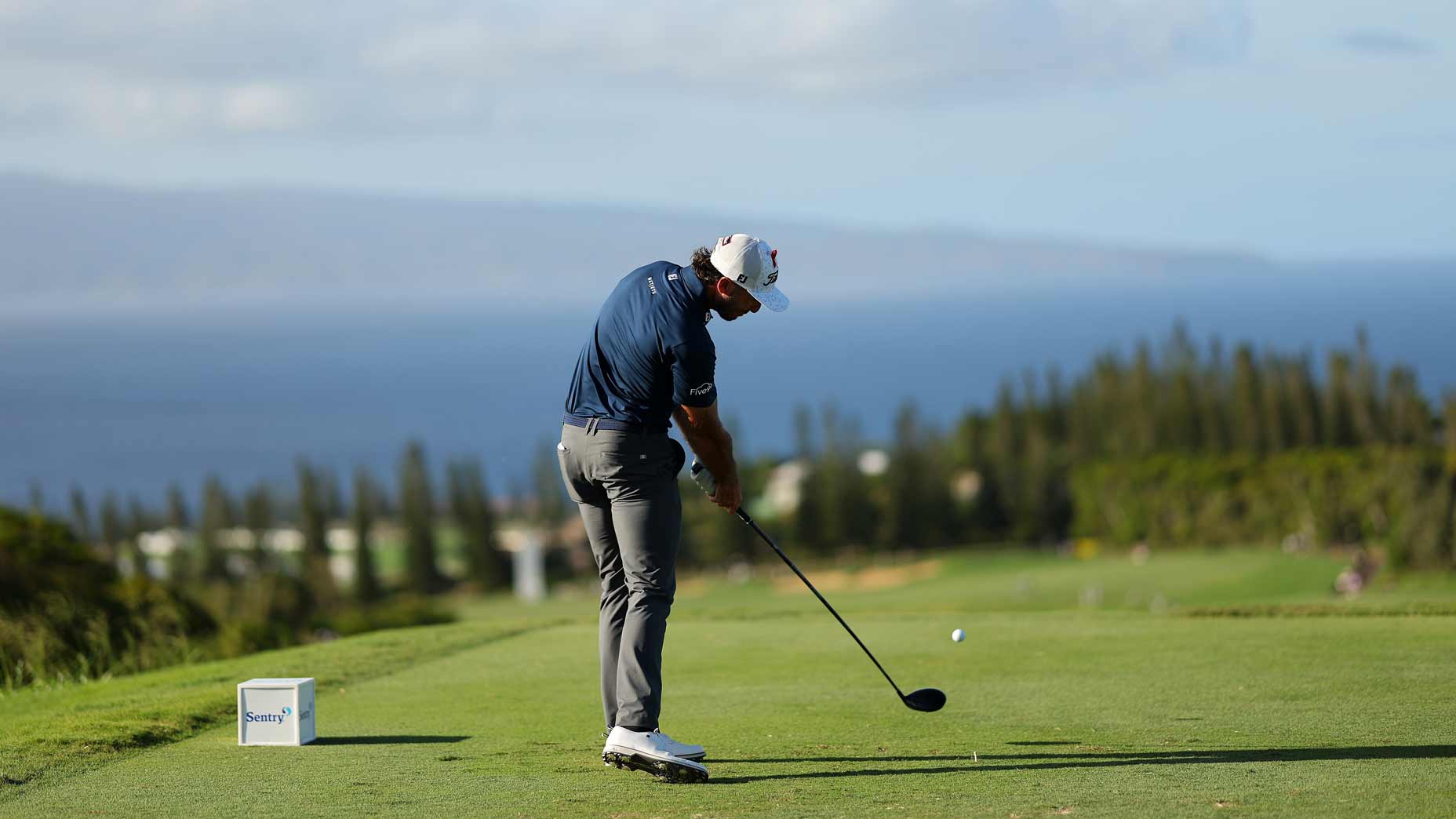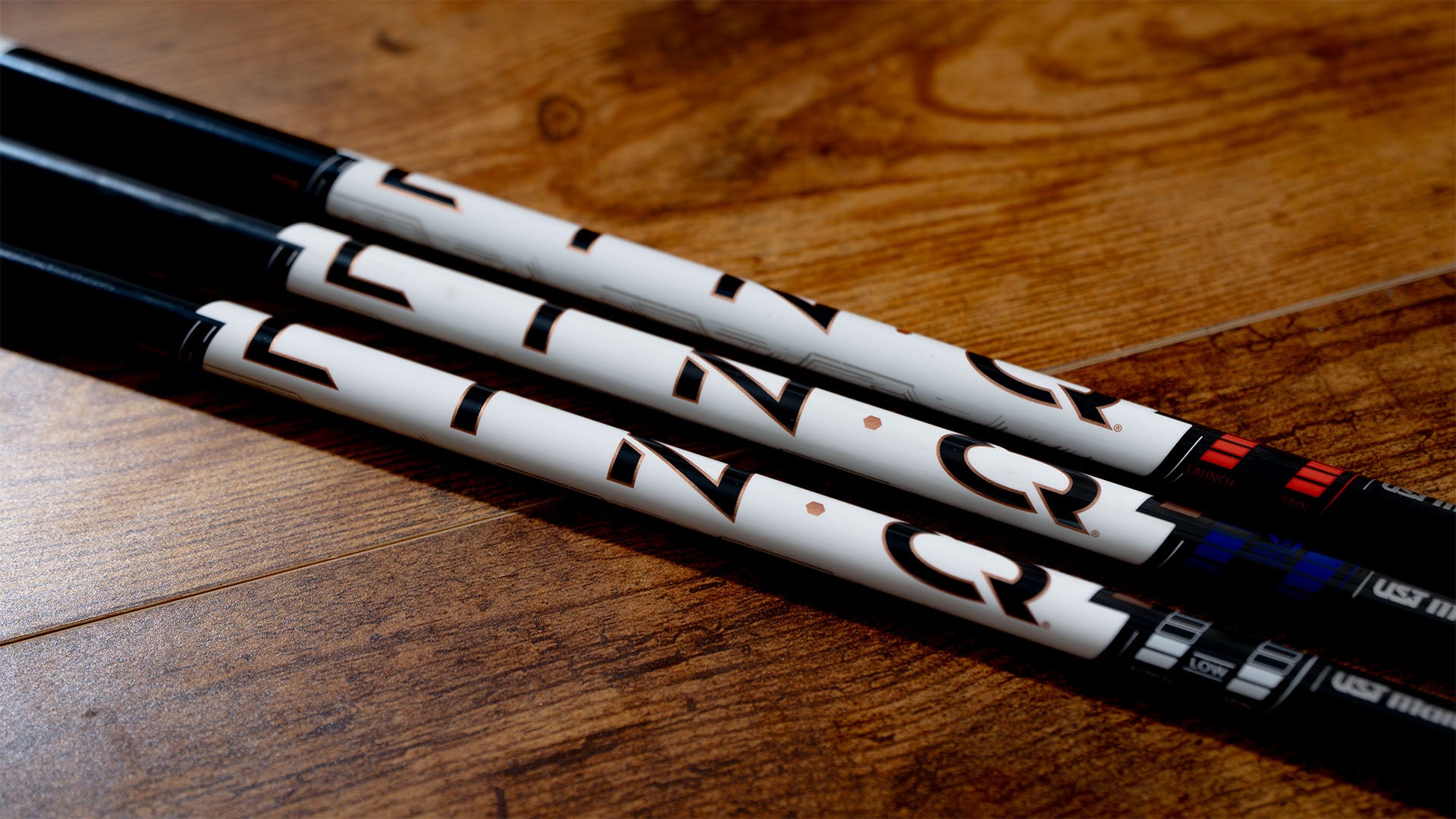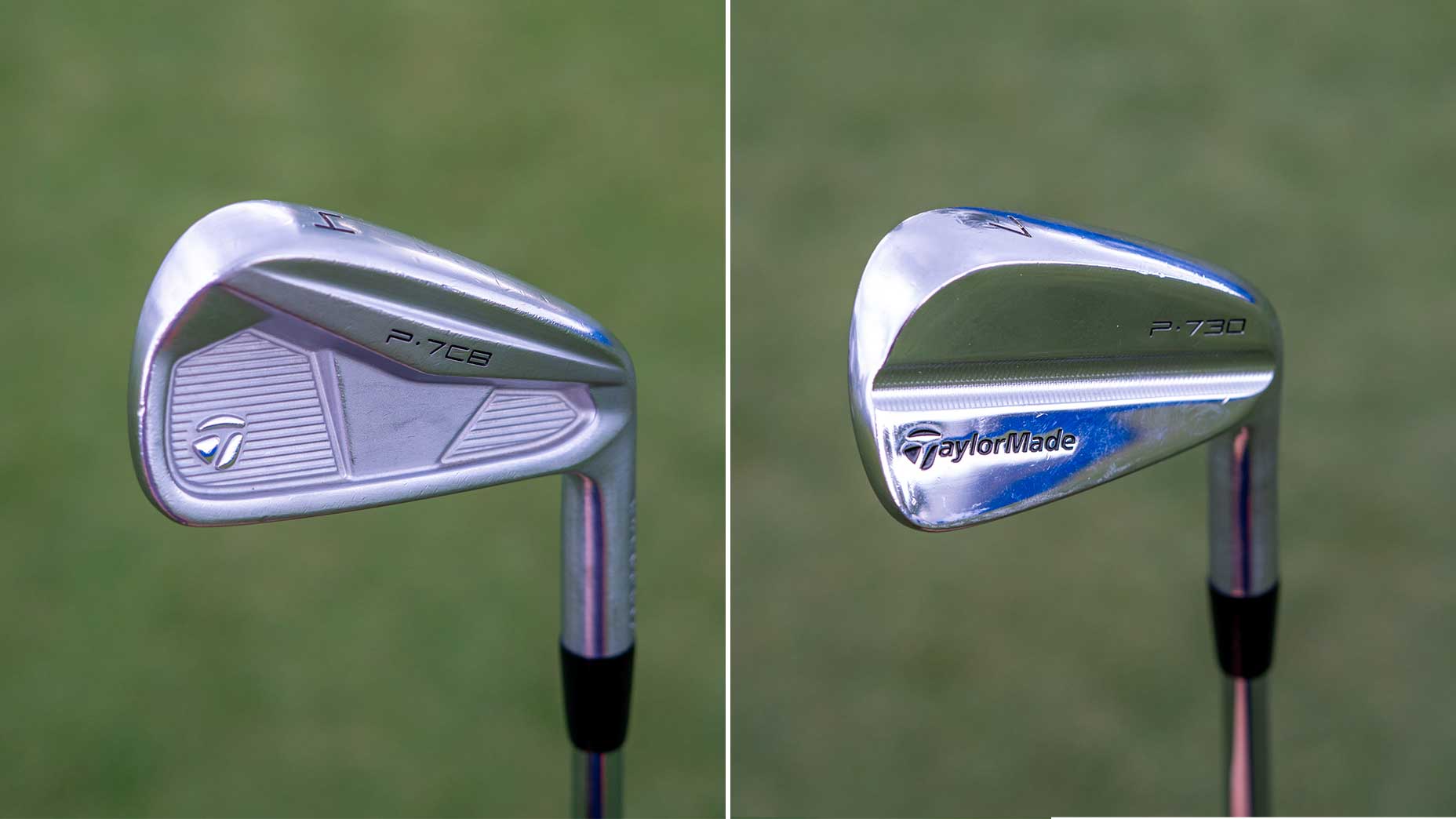If there’s one thing we all love about the first week of the year on the PGA Tour, aside from the stunning setting of Kapalua, it’s the absolutely gargantuan bombs hit by pros at the Plantation course.
We see it just about every season when the PGA Tour returns at the Sentry for the new year, drive after drive, after drive just keep rolling and rolling down Kapalua’s massive sloped fairways. In 2023, 89 of the 121 drives of 400+ yards on the PGA Tour were hit at Kapalua. This year, with firm and dry conditions, that number is already being smashed with 220 through three rounds. Every player in the field except one (sorry Tom Kim) has hit a 400-yard drive this week.
You would think that would mean Kapalua ranks toward the top for driving distance on the PGA Tour, but in fact the opposite is true.
In 2023, on the two measured holes for the PGA Tour driving distance stat (it’s holes 3 and 5 this week), the pros only averaged 286.5 yards. That ranks sixth in terms of shortest course for the official driving distance stat.
When you factor in all drives captured by Shotlink, the average goes up to 307.3 which is the 41st shortest out of the 58 courses on the PGA Tour last season (not all have statistics). Of course, with all the 400-yard bombs, especially in a limited field, you’d expect that average to be inflated.
While there were six holes during the first round of this year’s Sentry where the average tee shot went 345 yards or more (1, 6, 7, 12, 17 and 18), there were also seven holes that averaged 286 yards or less (3, 4, 5, 10, 13, 14 and 16.
That leads to one of the most unique challenges on the PGA Tour all season, according to Patrick Cantlay.
“This golf course is— at first glance, seems really difficult because you hit lots of shots that are different than you would any other week, and yet you look at the scores and people are always 20-, 25-, 30-under lately,” Cantlay said Wednesday. “So it really is a birdie contest, and I think with the par-5s and with 14 being drivable, you know there’s five, six holes every day that you have to make birdie on if you want to have a chance to win.
Bombs away! Why pros hit more 400-yard drives at Kapalua than anywhere elseBy: Jack Hirsh
“So if you’re not comfortable with all the unique shots that you have to hit, it’s hard to embrace that I have to make 25, 30 birdies for the week to have a chance.”
The Plantation course was the easiest on Tour in relation to par in 2022-23, but it’s also the only par-73 golf course on the schedule as the 1991 Coore/Crenshaw design has just three par-3s. However, it also effectively only has three par-5s, as the first of the course’s three-shotters, No. 5, was the easiest hole on the PGA Tour in 2023, averaging nearly a shot under par, more than two-tenths of a shot easier than any other hole.
If the 5th was a par-4, Kapalua would still be easier than every course on Tour except for PGA West’s Nicklaus course.
Yet, players seem to embrace the birdie-fests and the unconventional shots the course demands. Take for instance the 6th hole, a 420-yard downhill par-4. On Thursday, both Jordan Spieth and Xander Schauffele hit 370-yard tee shots that ended up in or near a bunker about 45 yards short of the green.
Kapalua Plantation Course rates: How much it costs to play the Hawaiian gemBy: Josh Berhow
From the sand to the front left pin, Schauffele played an explosion shot that landed well short of the green and ran up to to feet for an easy birdie look. From the collar around the bunker, Spieth did the same thing, leaving himself three-and-a-half feet (we’ll ignore the result).
There are also tee shots that force you to be creative, not necessarily the downhill bombs-away holes like 7, 17 and 18, where many of the 400-yard drives are hit, but some of the uphill holes
“I think there’s probably not a course on Tout where you have to use your feel more than this one,” Scottie Scheffler said Friday. “Especially with the wind direction today, there’s so many holes where you’re either hitting it very uphill and downwind, and then as you come towards the downwind holes, a lot of them are into the wind out of the left. So, you got to really use your feel, use numbers a little bit, but it has a lot to do with how you flight the ball in order to get it close.”
No shot the second one was 40 feet. Shotlink has the launch angle at 1.66 (!!!!!) degrees https://t.co/jz793USBrN
— Jack Hirsh (@JR_HIRSHey) January 5, 2024
On Thursday, Scheffler hit a tee shot on 13 that launched at just 1.6 degrees, had a peak height of 40 feet. His low cut ended up going just 253 yards and despite moving hard left to right, it still wound up in the left rough.
That drive came after Scheffler drove it over the green on the 420-yard 12the hole, a feat he duplicated Saturday on the downhill par-4.
With a course that has some 400 feet of elevation change, that dichotomy is something players see all over Kapalua. With so many downhill holes, there are uphill holes to balance them out. On Saturday, Max Homa’s tee shot on the 525-yard par-4 7th rolled out 477(!!!) yards, the longest tee shot on the PGA Tour in 22 years.
See that little red dot?
— Jack Hirsh (@JR_HIRSHey) January 6, 2024
That's @Maxhoma's tee shot on a 525-yard par-4!!!
477 yards!!!!!
LOVE Kapalua pic.twitter.com/wYEl2sZMyB
Two holes earlier, on a 524-yard par-5, his drive was nearly 200 yards shorter, coming to rest after just 279 yards.
The same contrast can be seen in the scoring from day to day. While every player broke par Friday, with the trade winds picking up, 13 players of the 59-player field were over par Saturday.
But that’s Kapalua.












